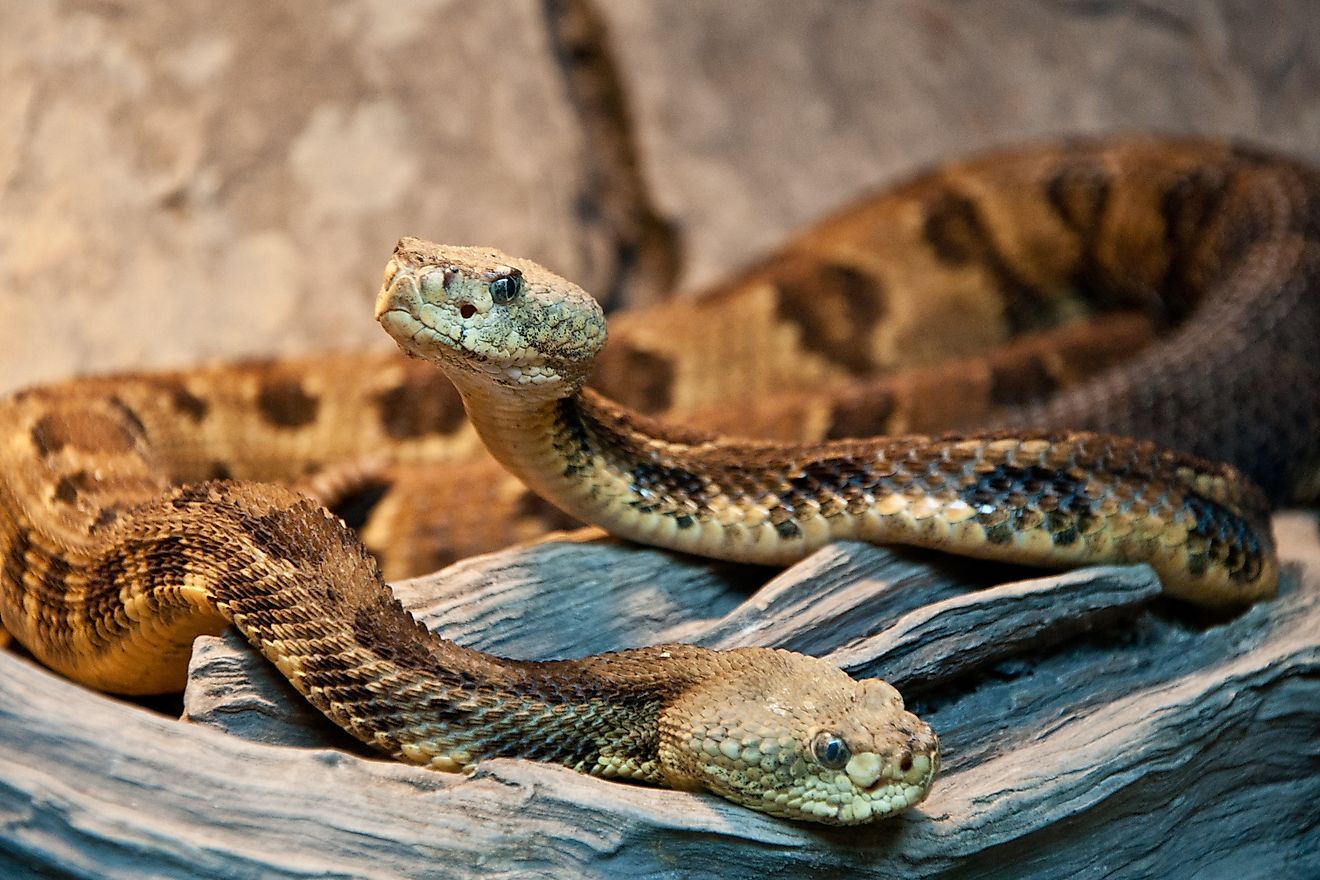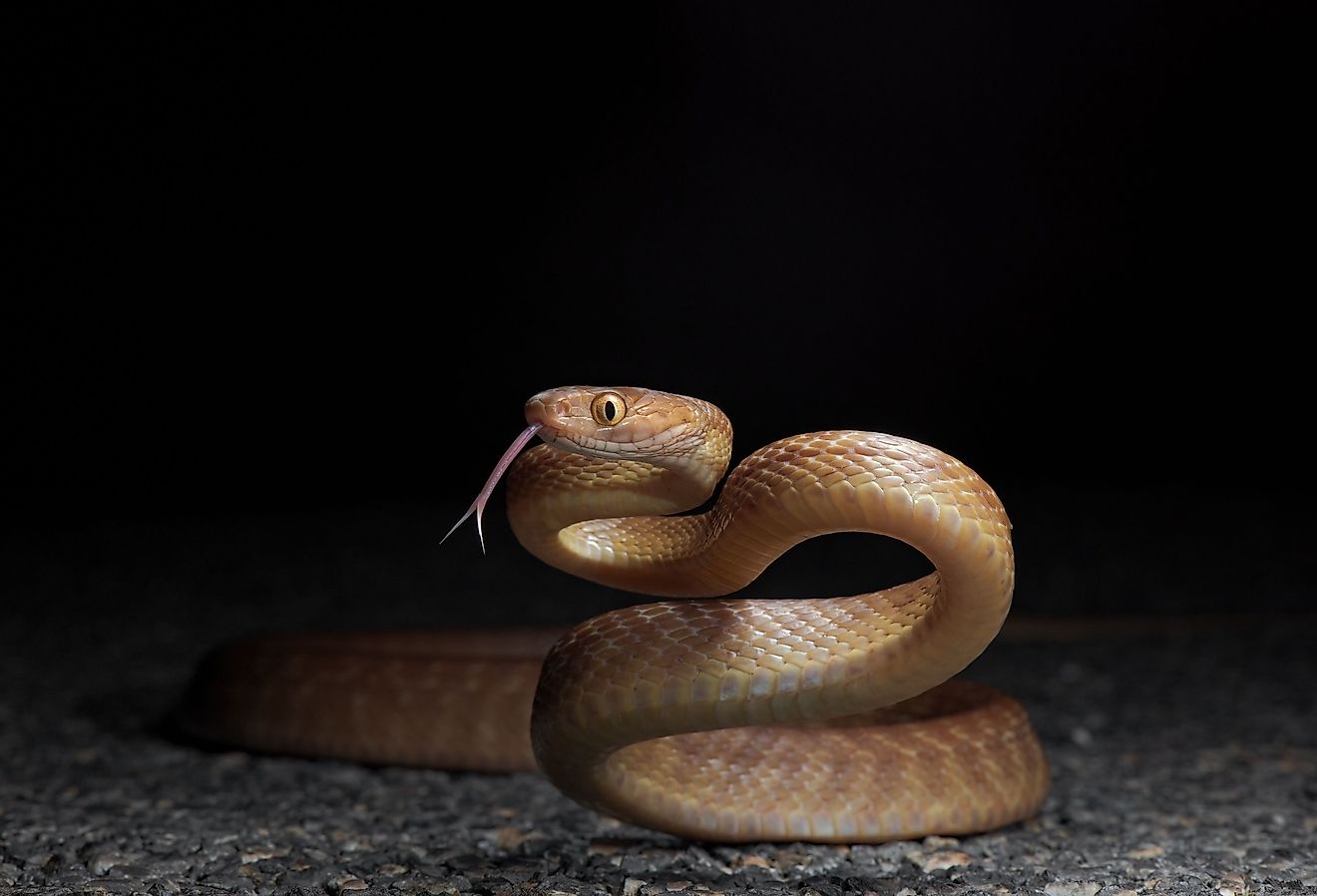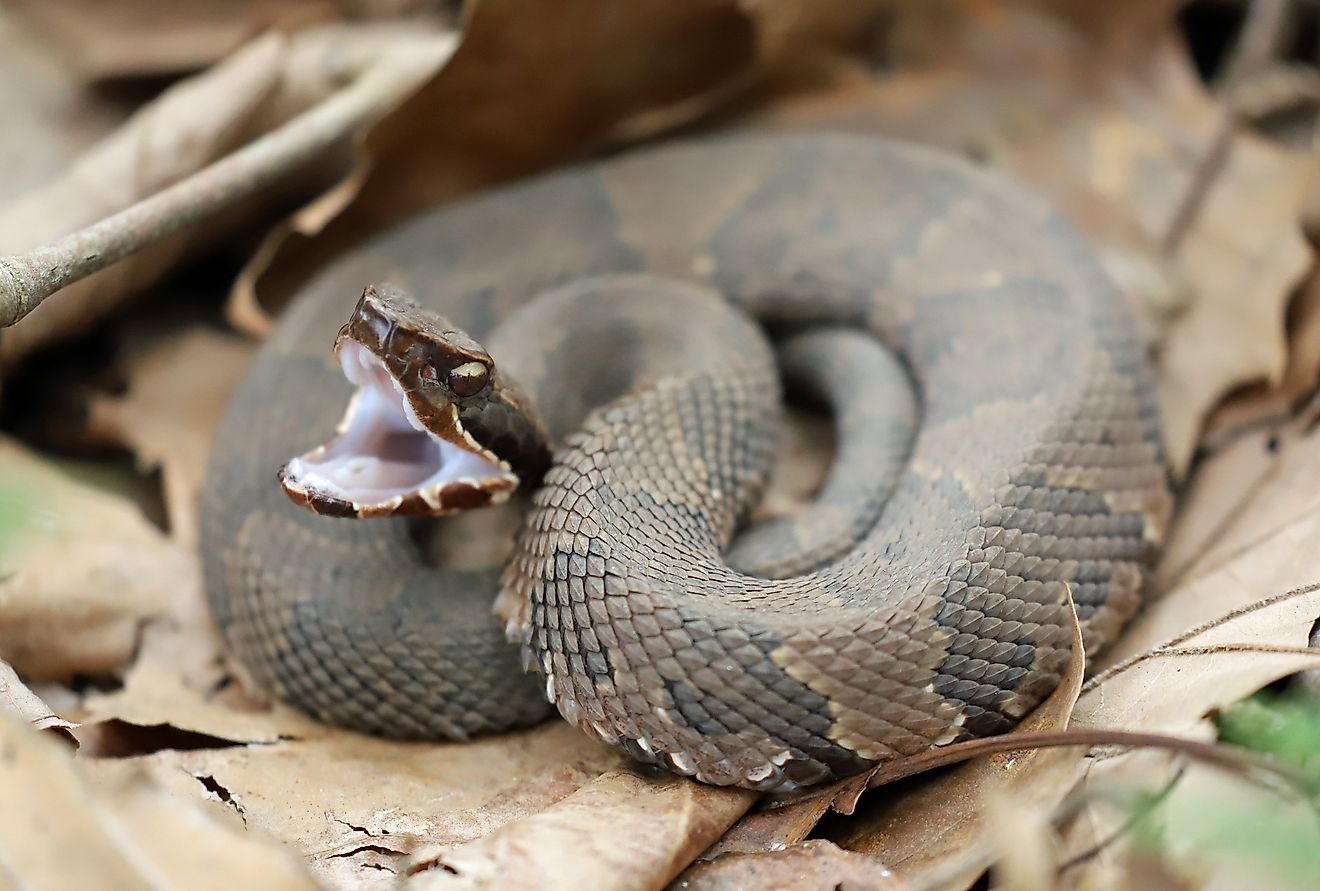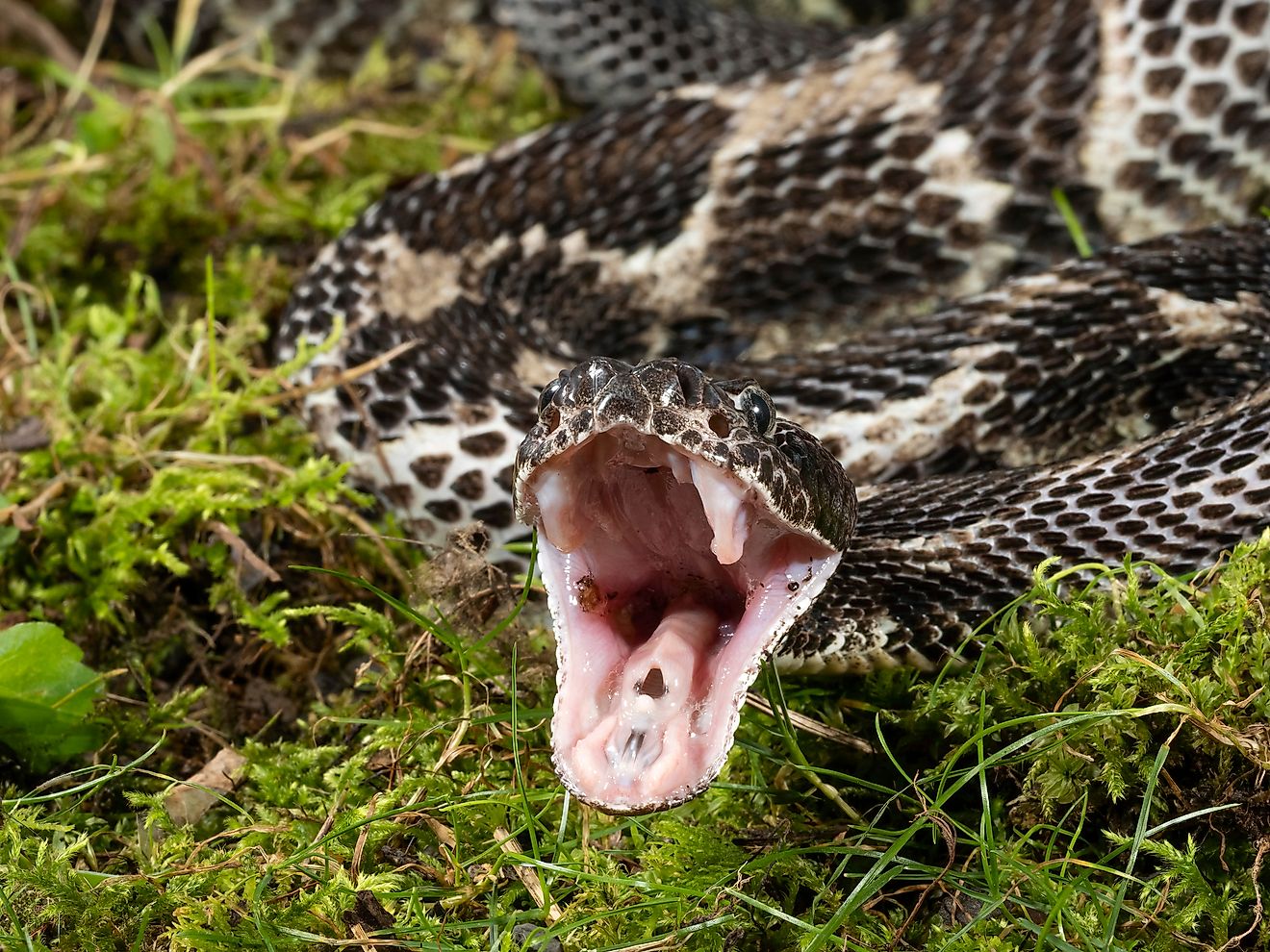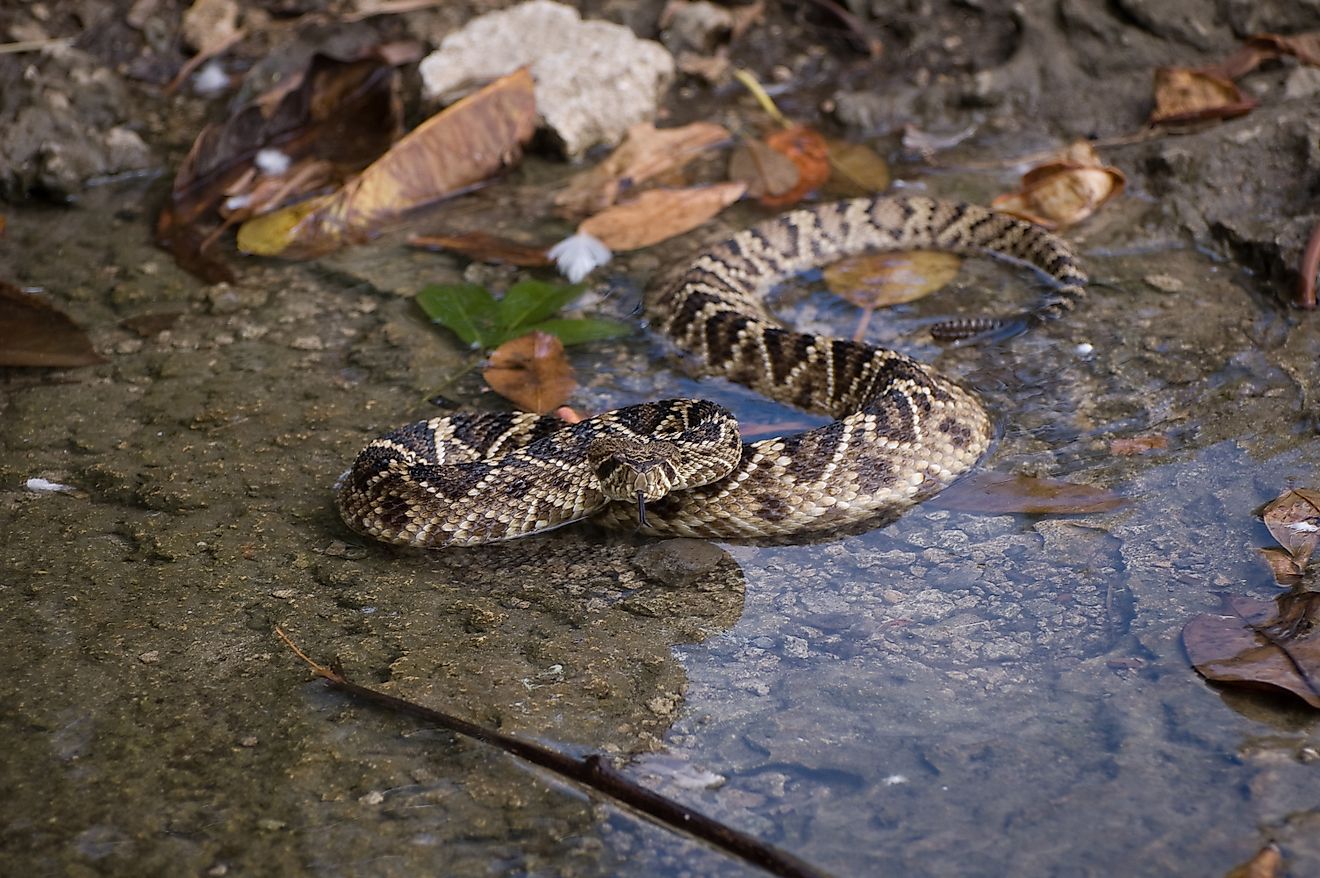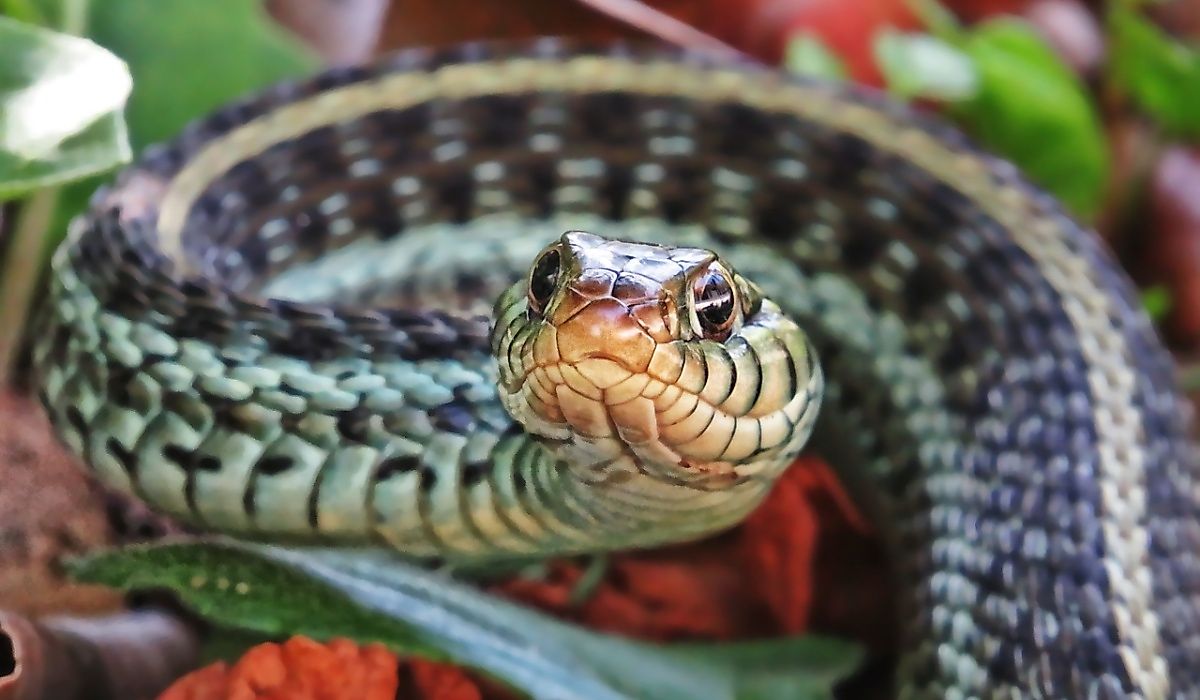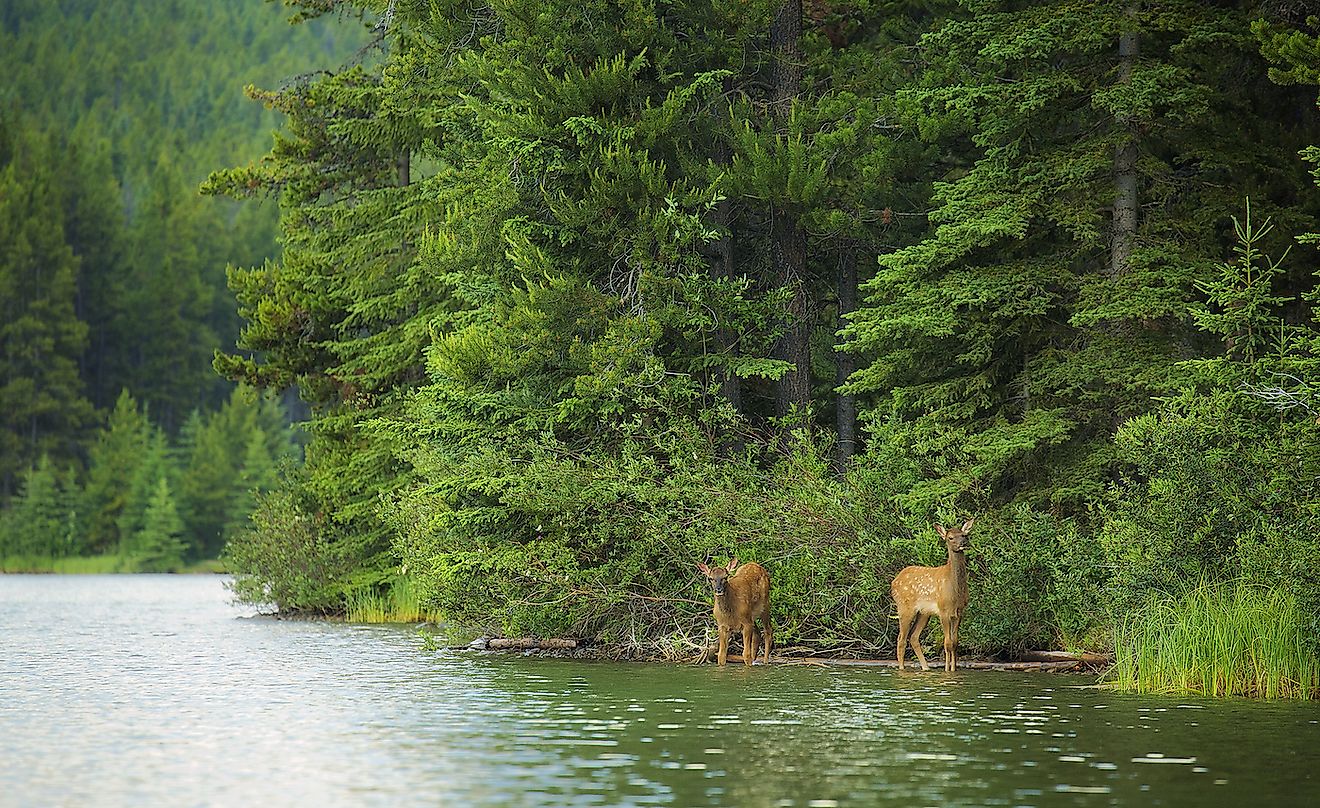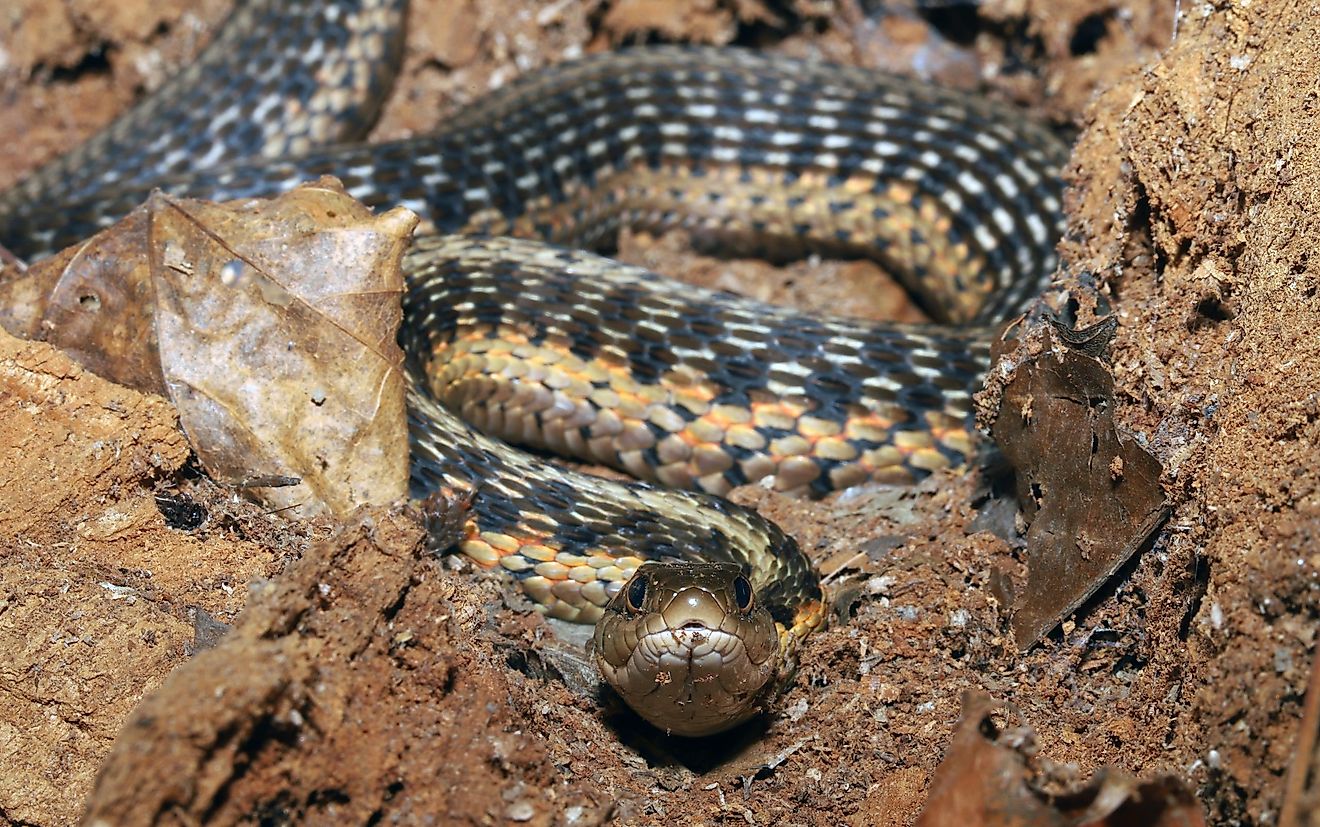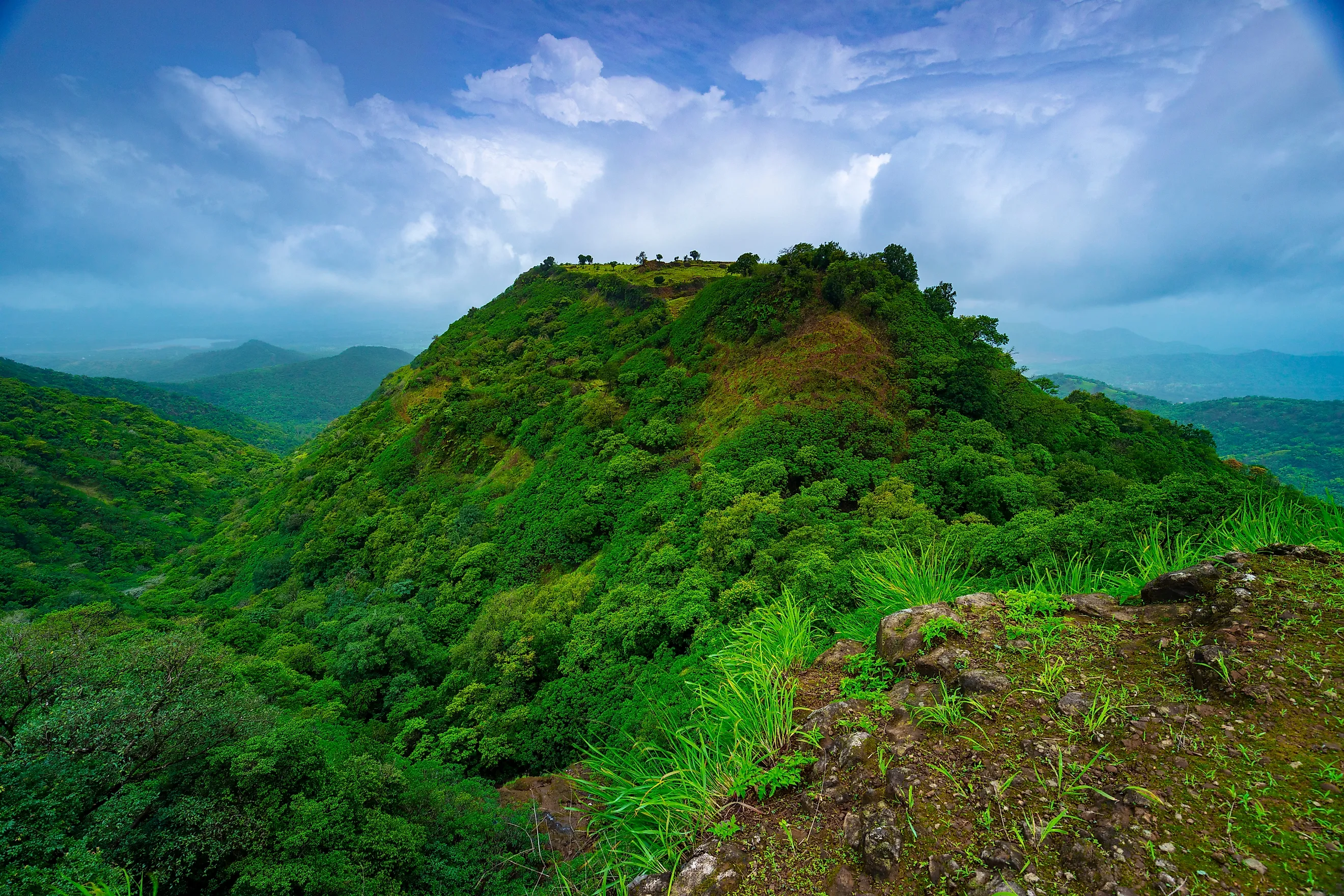
Western Ghats Biodiversity Hotspot
As one of the world’s most biologically rich and vulnerable regions, the Western Ghats mountain range in India is designated as a UNESCO World Heritage site and classified among the planet’s key biodiversity hotspots. Though subject to growing pressures from human activity and climate change, the region continues to yield new species and supports exceptionally high levels of endemism. According to recent assessments, the Western Ghats host approximately 5,000 flowering-plant species (with hundreds endemic) and support dozens of globally threatened mammals, birds, reptiles, amphibians and freshwater fish.
Contents:
Location
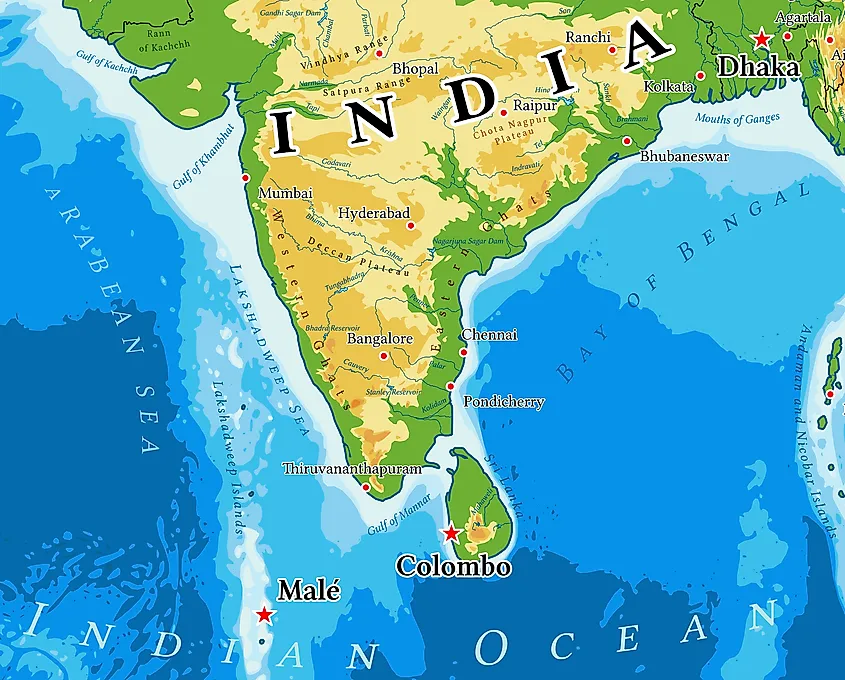
Also known locally as the Sahyadri Range, the Western Ghats is a highland region of steep slopes and rugged ridges that stretches roughly 1,600 km (1,000 miles) along India’s western coastline. The range begins just south of the Tapi River near the Gujarat-Maharashtra border and extends to the southern tip of India at Kanyakumari. It spans six Indian states — Gujarat, Maharashtra, Goa, Karnataka, Kerala and Tamil Nadu — and covers an area of around 140,000–160,000 km². The Western Ghats form the western edge of the Deccan Plateau and are among the older mountain systems on the subcontinent, with geological evidence dating uplift to tens of millions of years ago.
Geography
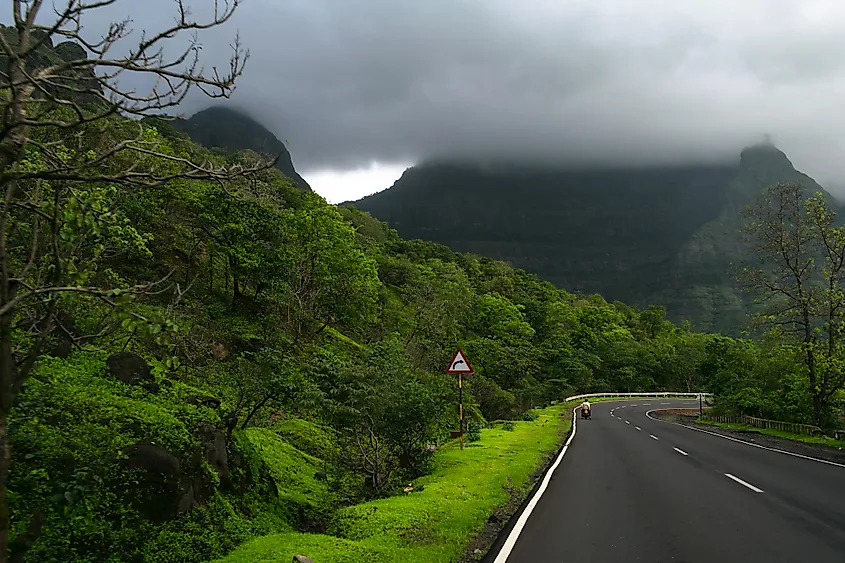
The northern sections of the Western Ghats are generally lower and more subdued compared to the rugged, higher southern ranges. Average elevations in the northern Ghats are around 1,200 m, while the southern Ghats contain several peaks above 2,000 m. The continuity of the mountain chain is broken by a few major gaps, most notably the Goa Gap and the Palghat (Palakkad) Gap, which allow the movement of weather systems and species between the coastal plains and the interior. The highest point in the Western Ghats is Anamudi, located in Kerala’s Idukki district, which rises to 2,695 m (8,842 ft).
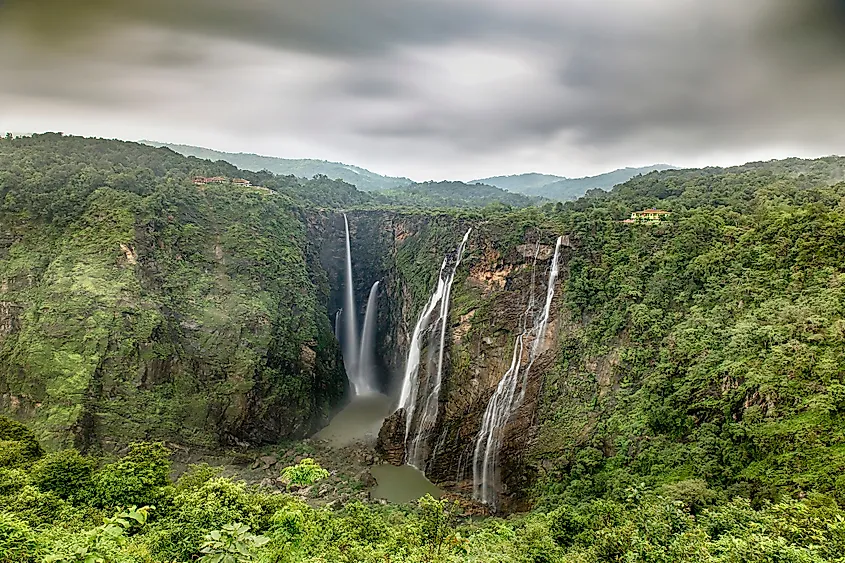
The Western Ghats perform vital hydrological and watershed functions and forms one of the four watersheds of India that feeds the perennial rivers draining about 40% of the entire Indian subcontinent. Many significant river systems originate in the Western Ghats, including the Godavari, Krishna, Kaveri, Tungabhadra, Thamiraparani, and their tributaries. These rivers host numerous economically important fishes and carry large volumes of rainwater during the summer monsoons. Several waterfalls are found in the Western Ghats including Jog, Dudhsagar, Athirappilly, Shivanasamudra, etc. Some of the principal man-made lakes that are found here include Ooty, Karlad, Devikulam, Kodaikanal, etc.
Some major rock types found in the Western Ghats are granites, charconites, khondalites, and leptynites along with crystalline limestone, iron ore, dolomites, and anorthosite. The southern hills also contain sufficient quantities of bauxites.
Climate
The climate of the Western Ghats varies greatly with altitude and the area’s distance from the Equator. The lower reaches of the Ghats experience a ‘tropical humid’ climate which is moderated by the area’s proximity to the sea. During the monsoons, the Western Ghats act as a barrier to the rain-bearing clouds. Therefore, the windward side receives comparatively higher rainfall than the eastern part of the Ghats which is located in the rain-shadow area.
Speciation
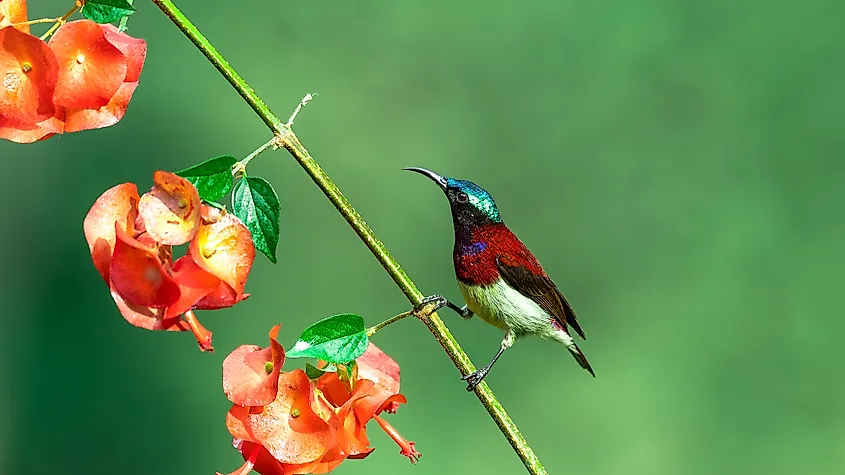
As a general observation in the world, endemic species are more common on the islands than on the mainland, having been forced to isolate upon the separation of landmasses. But, being located on a large subcontinent, the Western Ghats makes an exception, as a mainland region containing one of the highest levels of endemism in the world. About 54% of the 650 tree species, 65% of the amphibians, 62% of the reptiles, and 53% of the fishes are endemic. Of the known invertebrates, 80% of the tiger beetles are endemic. The Western Ghats is also home to at least 325 globally threatened species. Of these 325 globally threatened species, there are about 229 plant species, 32 mammal species, 15 avian species, 43 amphibian species, 5 reptilian species, and 1 fish species.
Flora
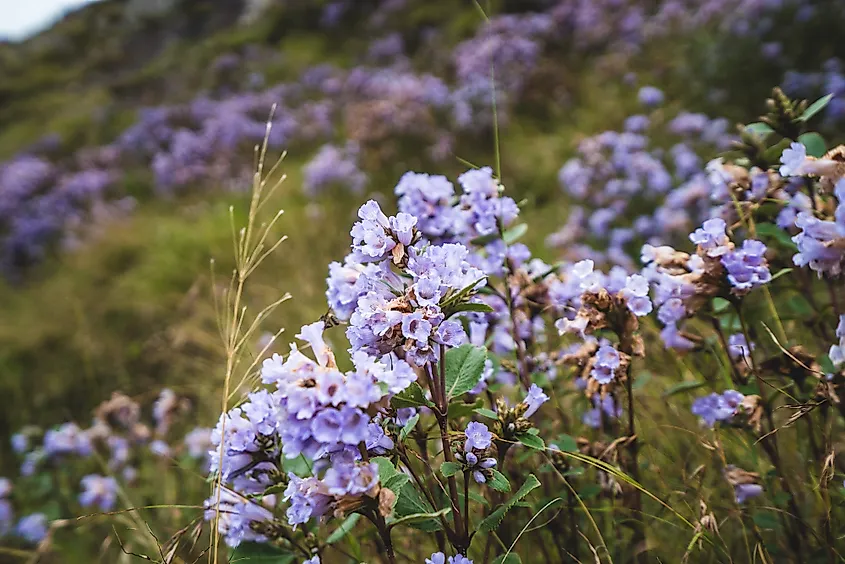
The whole area of the Western Ghats region is rich with diverse flora. Nevertheless, much of it is threatened, including entire habitats, such as the Shola forests, Myristica Swamps, and the one-of-kind wildflower meadows which seasonally explode in a massive blooming event. Altogether, there are 7,402 flowering plant species in the Western Ghats, 5,588 of which are endemic to the highlands. 376 exotic plants have naturalized and found a home in a new environment. In addition to this, 1,438 plants are mainly cultivated as ornamentals.
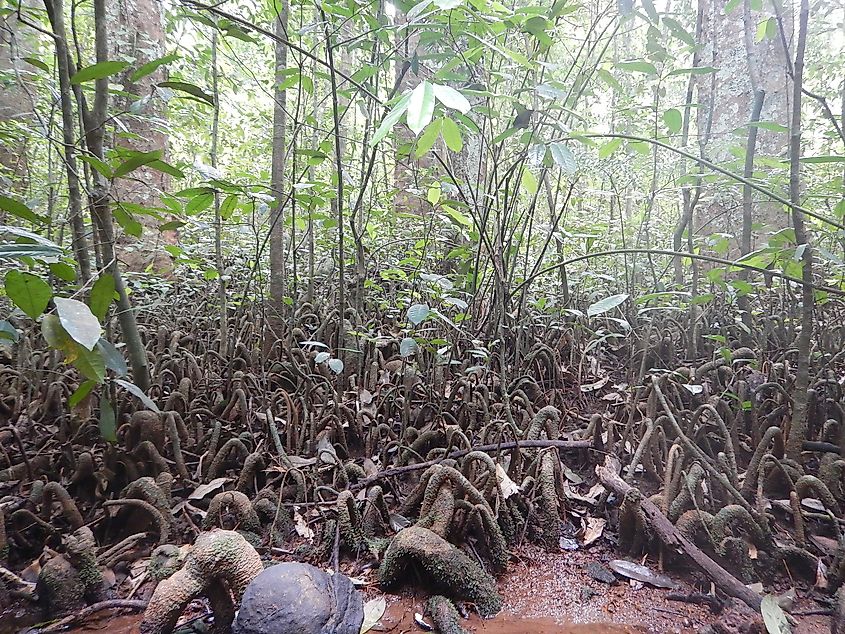
The forests of the Western Ghats which host the 325 globally threatened species of flora and fauna are non-equatorial tropical evergreen rainforests. The Shola forests, growing at higher elevations, are known for their highly floristic compositions. The forests with Myristica freshwater swamps have an abundant capacity to store carbon. The two main trees which contribute to this process are the threatened Gymnocranthera canarica and Myristica fatua, which are members of the Myristicaceae family. It is believed that only premium efforts can conserve the Myristic Swamps and the valuable trees that store high amounts of carbon.
Fauna
The Western Ghats harbors a rich and diverse faunal wealth. Among the vertebrates, there are about 508 avian species, 288 fish species, 203 reptilian species, 139 mammal species, and 181 amphibian species.
Mammals
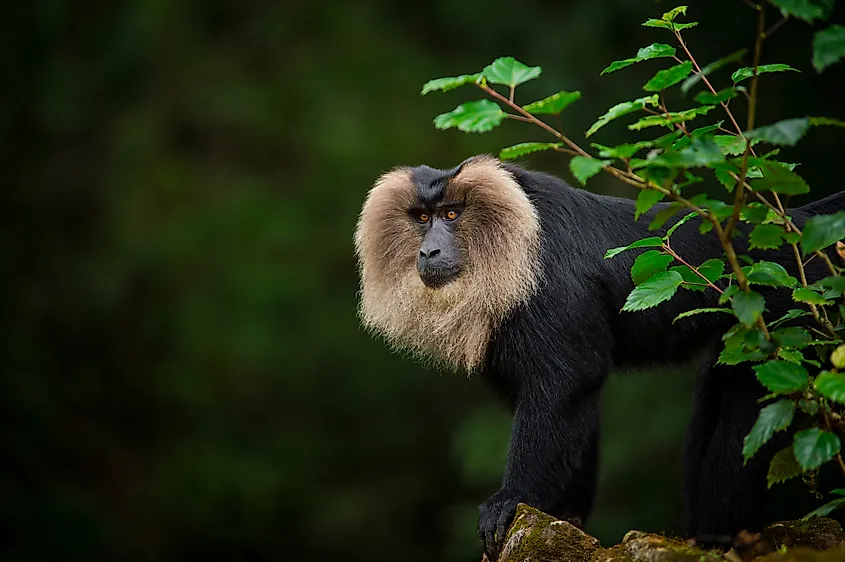
The Western Ghats is occupied by about 139 mammal species, including 16 endemic mammals. A large number of the world’s most threatened mammals are found here including the Lion-tailed macaque (Macaca silenus), Nilgiri Tahr (Nilgiritragus hylocrius), gaur (Bos gaurus), Asian Elephant (Elephas maximus), Tiger (Panthera tigris), sloth bears (Melursus ursinus), Indian leopard (Panthera pardus), Nilgiri langur (Semnopithecus johnii), Nilgiri Marten (Martes gwatkinsii) and the critically endangered Malabar large-spotted civet (Viverra civettina).
An estimated 11,000 elephants have chosen the Nilgiri Hills located in the south-western corner of the Western Ghats as their primary habitat. The Western Ghats ecoregion forms an important part of Project Elephant and Project Tiger reserves.
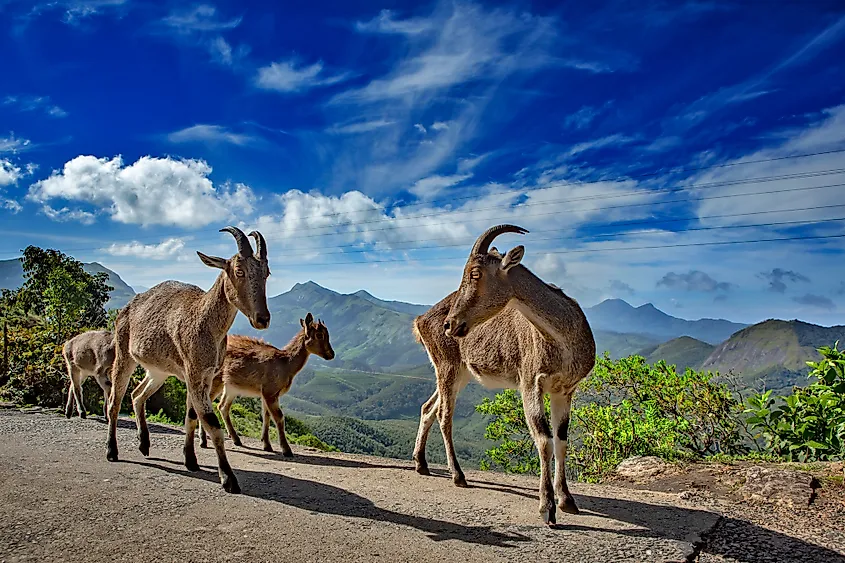
The State Animal of Tamil Nadu - Nilgiri Tahr is endemic to the Western Ghats and is commonly found in the Shola Forest area, a highland that reaches over 2,000 meters in elevation. The Lion Tailed Macaque is an endemic primate that moves freely through the higher reaches of the tropical forests in the Western Ghats. Up to 7.5 feet tall and weighing over a ton, the Gaur (Indian Bison) also thrives in this area in large populations.
Birds
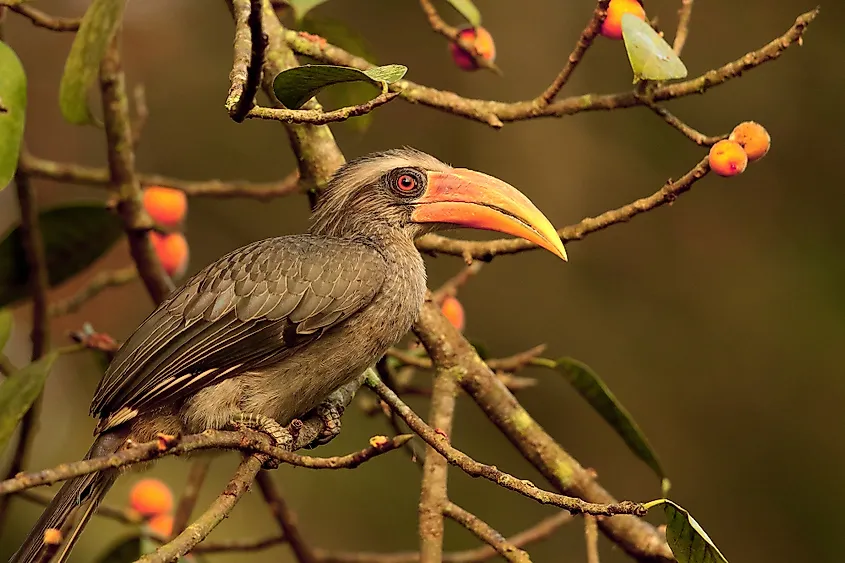
The Western Ghats is home to 508 bird species. Of these, 16 bird species are reported to be endemic to the Western Ghats. Some of the notable birds that are found here include the broad-tailed grass bird, the Nilgiri pipit, Nilgiri wood pigeon, rufous-breasted laughing thrush, Nilgiri black, and rufous flycatcher, Malabar Grey Hornbill, crimson-backed sunbird, grey-headed bulbul, etc.
Reptiles
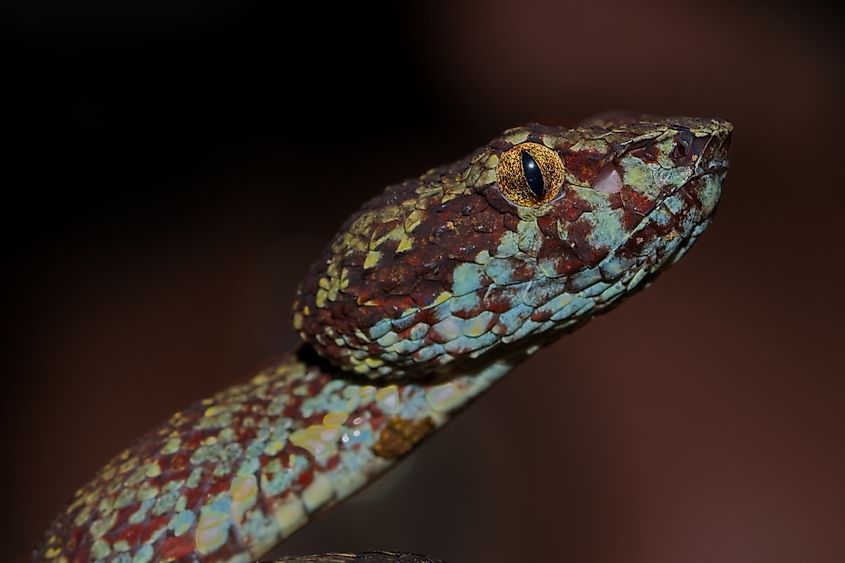
About 124 species of reptiles are endemic to the Western Ghats. Shield-tailed snakes such as Melanophidium, Plecturus, Teretrurus, and Rhabdops are endemic to the Western Ghats. Some of the venomous snakes that are also endemic to the region include the striped coral snakes, the Malabar pit viper, the horseshoe pitviper, etc. The endemic lizards include the Kaestlea, Salea, and Ristella species.
The endemic Cochin Forest cane turtle have found their paradise near the deeply hidden lakes, while the rare, sun-loving mugger crocodile can easily be given away by its glistening back in the middle of an open pond.
Amphibians
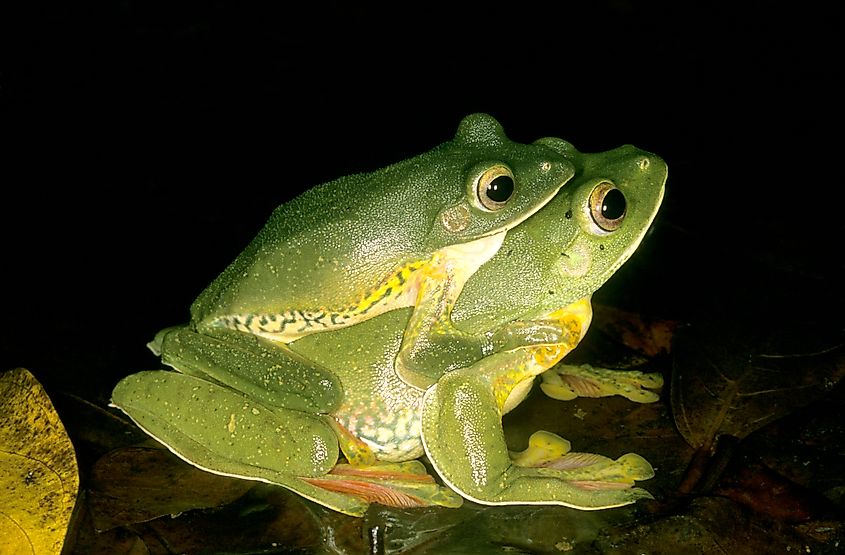
More than 80% of the 181 amphibian species are endemic to the Western Ghats. Some of the endemic frogs are the Malabar frog, the Micrixalus, and the Indirana. The endemic tree frogs include the Ghatixalus, Mercurana, and Beddomixalus. The endemic toads are the Pedostibes and Ghatophryne. Recently, an endangered purple frog named Nasikabatrachus sahyadrensis was discovered from the Western Ghats.
Fish
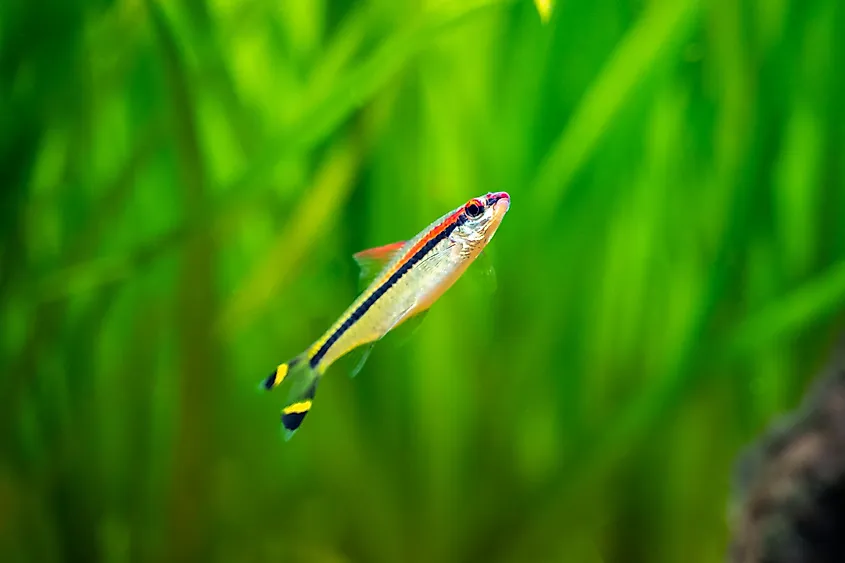
There are about 288 freshwater fish species and 35 marine water species that are found in the Western Ghats. Of these, 118 species of fishes are endemic to the Ghats. 13 whole genera, including the Betadevario, Dayella, Horalabiosa, Horabagrus, etc, are entirely restricted to the Western Ghats.
The Chalakudy River running through the inner edge of the lower Western Ghats contains the highest number of fishes, with 98 different species. The Periyar, the Pamba, and the other upstream tributaries of the Krishna, Kaveri, Bhavani, rivers also have high counts of various fish species. The lakes of the region contain exquisite fishes such as the Dension barb, the spotted melon barb, several species of ornamental Dawkinsia Barbs, the striped zebra loach, the dwarf pufferfish, the meek horabagrus catfish, and the dwarf Malabar pufferfish.
As per IUCN, about 97 of the freshwater fishes found in the Western Ghats are threatened, of which 12 being critically endangered, 54 are endangered, and 31 vulnerable. It is estimated that the fish population is higher in the southern Western Ghats than in the northern Western Ghats.
Invertebrates
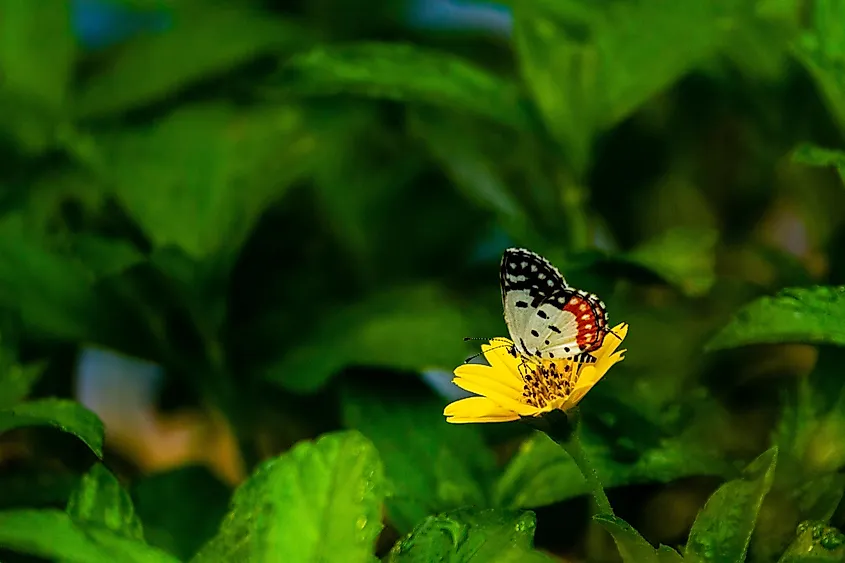
In the Western Ghats, it can only be estimated that there are around 6,000 species of insects. There are about 332 species of butterflies in the Western Ghats, which belong to 166 genera under 5 families. From the odonates, generally known as the dragonflies, there are 174 different species, with 69 being endemic. The endemic odonates of the Western Ghats are mainly restricted to the region’s rivers and streams.
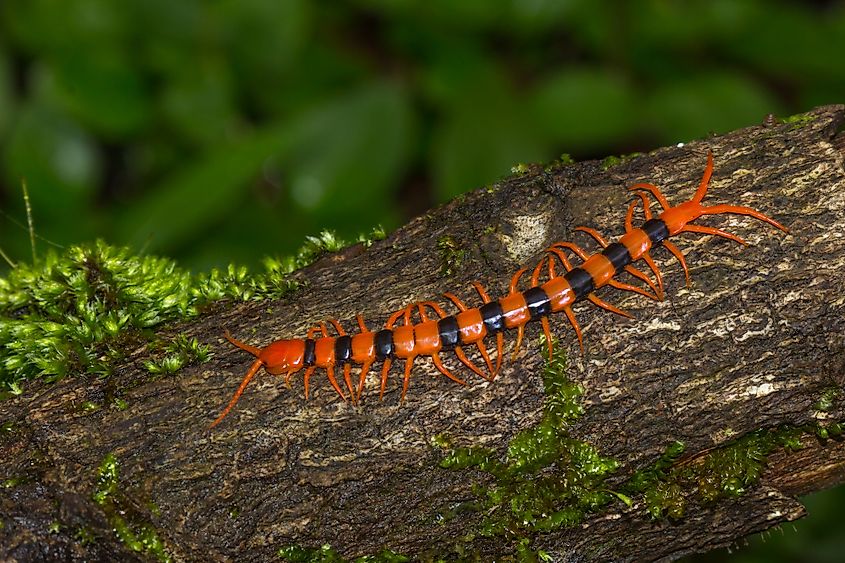
More than 77 different species of freshwater mollusks including 52 gastropods and 25 bivalves have been reported from the Western Ghats. 28 species of freshwater mollusks are endemic to the region, of which 4 are considered endangered, and 3 are vulnerable.
Environmental Threats
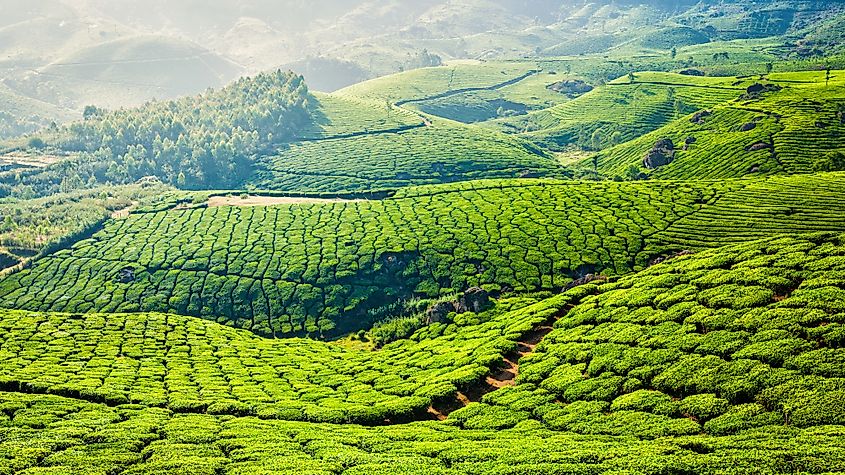
The cultivation of tea, coffee, rubber, and palm oil has been propelling the slow destruction of the lush natural beauty of the region, once densely covered by forests. Human activities pose the greatest threat to the environment of the Western Ghats that negatively affect the region’s rich and highly vulnerable biodiversity. The growing numbers of threatened and endangered species are clear evidence of the escalating situation.
From livestock grazing to clearing the land for agricultural activities, forest land encroachments, and construction of reservoirs and roads, the Western Ghats continue to face serious destruction of its habitats. The growth of population demands additional land clearage for housing needs that continues to fragment and destruct habitats, while also sacrificing the area to wildlife poaching. Pollution is debilitating to the region, as well as excessive sand mining from rivers and agrochemicals used on coffee and tea plantations are seriously damaging the aquatic and forest ecosystems.
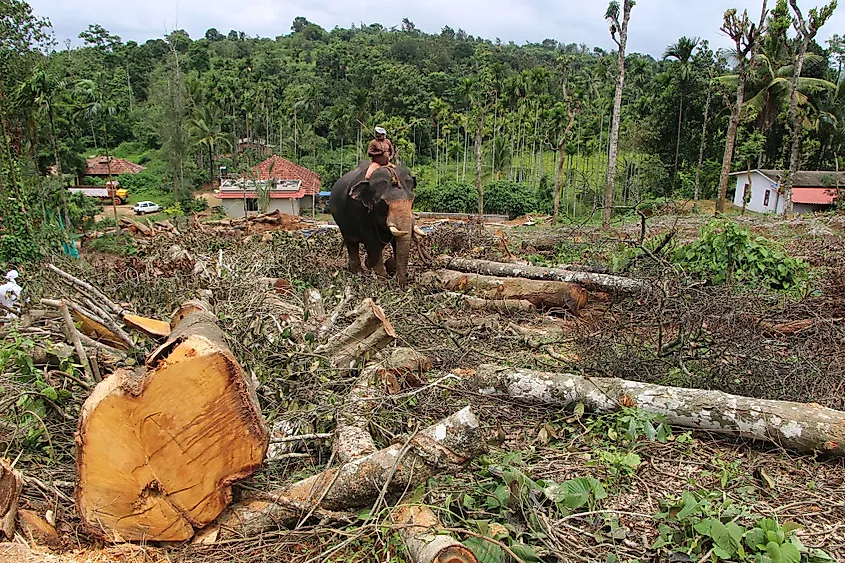
Recent events have also escalated the urgency for preservation and the concern for the seemingly careless human initiatives. In 2019, the Hubballi-Ankola railway line project was approved at the Karnataka State Wildlife Board meeting in Bengaluru, prompting to axe lakhs of trees in the Western Ghats. Another project was also proposed, to allow mining in the area.
Many reports have been submitted to the Government regarding the current state, and what the environment will look like, should these human activities continue. The response, however, has not been hopeful, with politicians not taking these threats seriously.
Some initiative that has been taken includes the protection of 2 biosphere reserves, 13 national parks several wildlife sanctuaries and reserve forests for specific endangered species. The Bandipur National Park, Silent Valley National Park, Kudremukh National Park, Periyar Tiger Reserve, Nilgiri Biosphere Reserve, etc are some of the protected areas in the Western Ghats.
